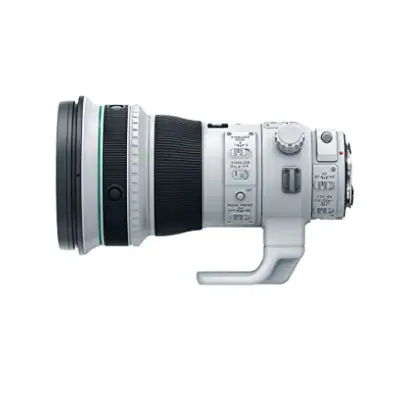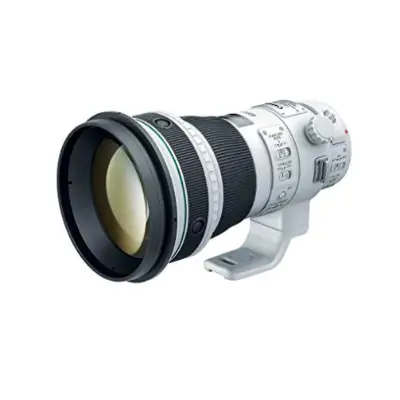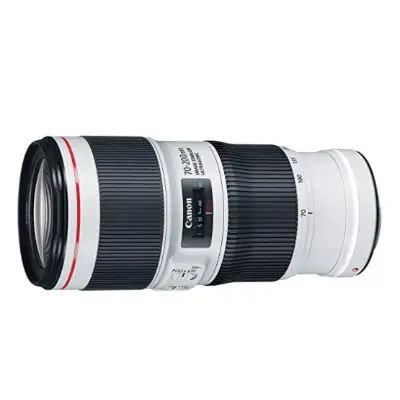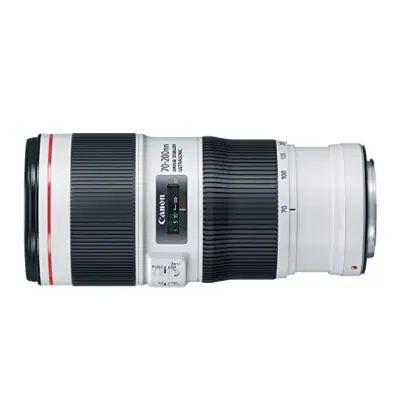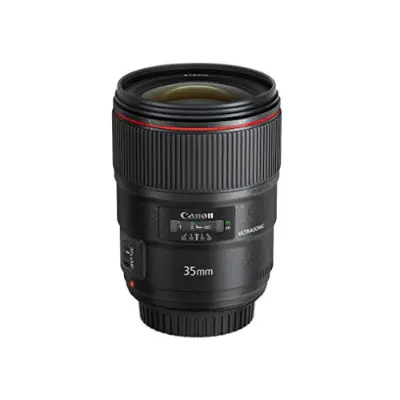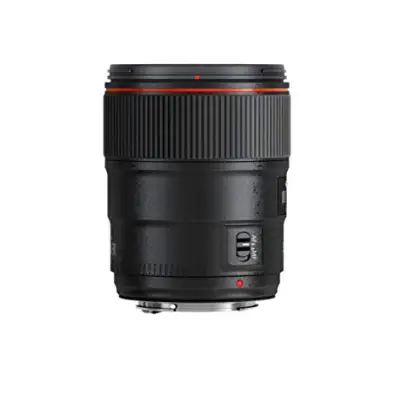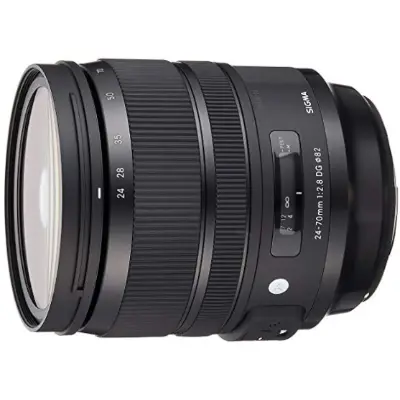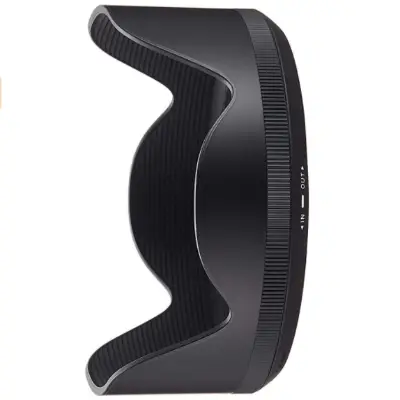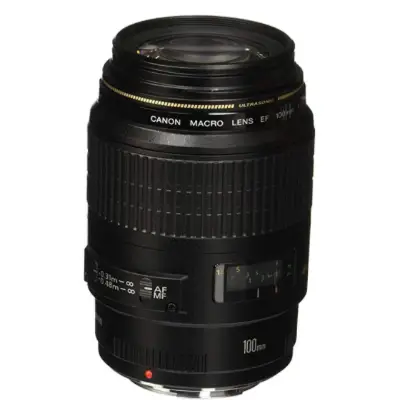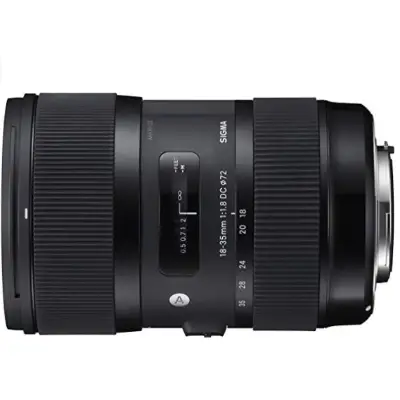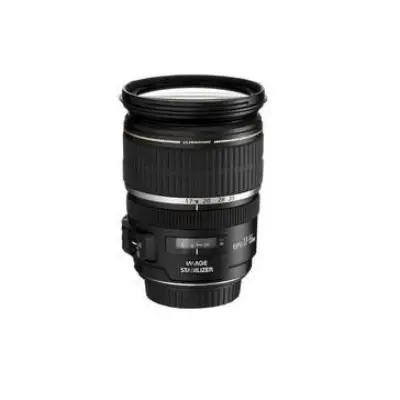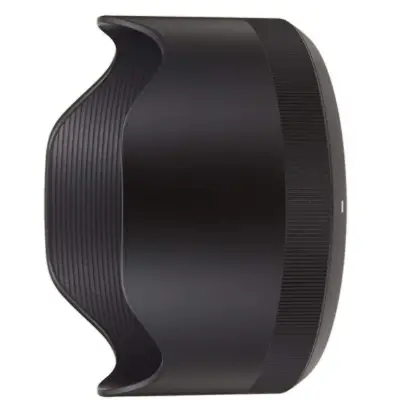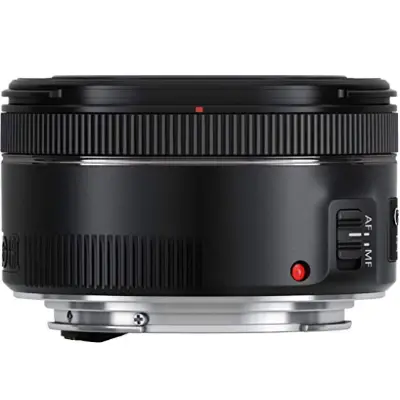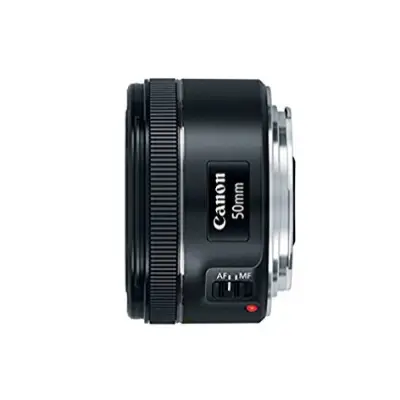Best Canon Lenses
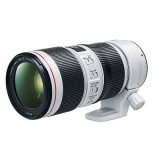
Now, without question, if you are new to this sort of technology or are just simply ignorant about it all, the jargon behind what makes camera lenses work can be downright confusing and overwhelming to comprehend. We are not saying it is going to be easy but with the help of this guide, our goal is to provide you with a better understanding of what you need to look for when seeking a Canon lens. All the models below are compatible with one of Canon's cameras.
Standout Picks
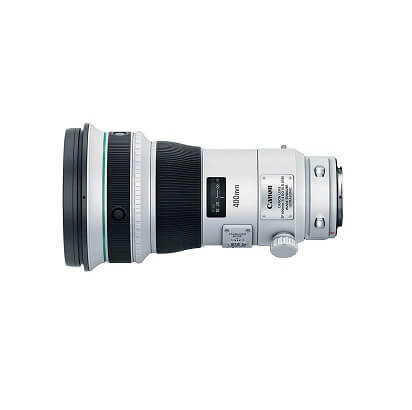
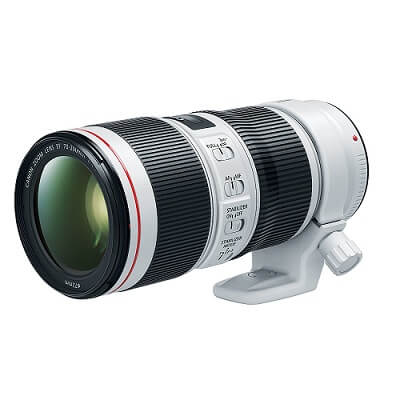

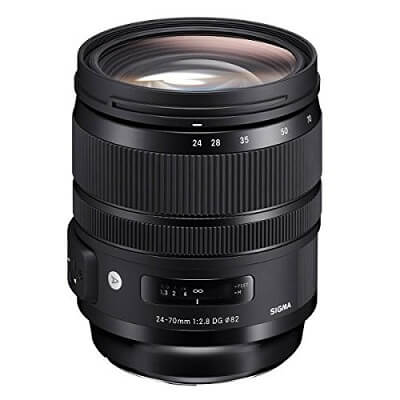

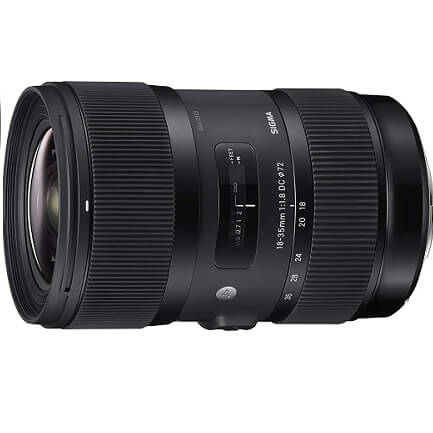
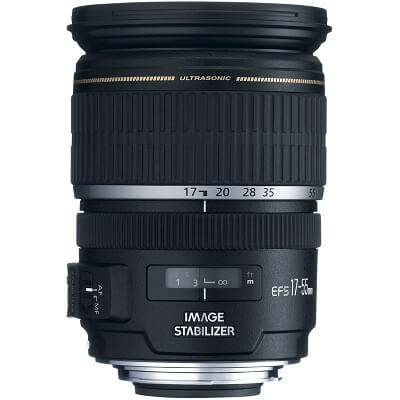

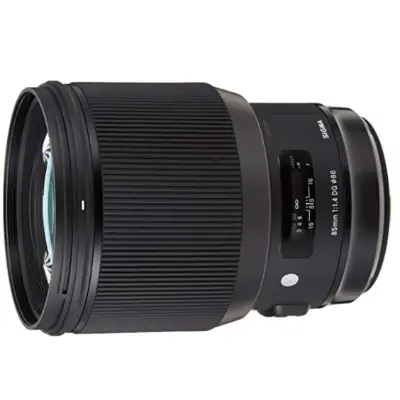
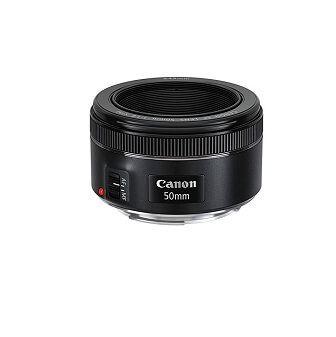
Criteria Used for Evaluation
Compatibility
Simply put, you can't afford to assume that the model you pick will fit on the camera you currently own.
No one will argue that this is not the most important consideration when buying this type of product. If it is not compatible with your current camera then it will not do you much good (and these things get downright costly). Oftentimes, you will see that camera brands only accept lenses from their brand. Thus, because this guide is suited for models that are compatible with Canon cameras, a lot of the options are designed by the manufacturer. Now, when it comes to compatibility, there is one major technical specification to look out for. And, this is the camera mount that a particular model is compatible with. You will see either EF-S or EF mounts and this is what you need to look for.
EF-S models are going to be designed specifically for use on APS-C cameras. Meanwhile, EF models will actually be designed to work with these types of cameras and also full-frame designs. Talking about Amazon specifically, there is a neat feature that they have that allows you to enter the current camera you have to see if it is compatible with a specific lens.
Features
This section is really all about the technical specifications and their importance.
Take a deep breath as there is a lot to cover in this section. For starters, two of the most important specifications to assess are the focal length and aperture of any given model. Starting with the focal length, this is going to define the angle of view that any model has. To keep it simple, a longer focal length will allow for a more narrowed zoom shot while a shorter focal length will provide a wider image. For general use, you can get away with a 15-50mm range but for enhanced zoom power, you may be looking in the 55-300mm focal length range. Also, keep in mind that this range will differ depending on if your camera has a full-frame or APS-C sensor. As for the aperture range, this will dictate how much of the scene you can have in focus. For the record, you will see this labeled as f/x (with the x being the number that you need to assess).
If this number is larger (for example, f/34) then the majority of the scene is going to be in focus. With an aperture of f/1.4, though, you can focus on a specific object and have the rest of the image be blurred for a more stylish and realistic effect. And, all lenses will have a maximum aperture range that they can achieve. Ironically, the word “maximum” can make this confusing as you want to look for a lower number. Also, a lower aperture can allow you to shoot indoors without flashes and is also faster.
Also, as far as the focus system goes, many of you will want to look for autofocus and manual focus override modes. Ideally, look for autofocus systems that are advanced enough to perform quickly and quietly. As for the manual focus override, this can allow you to manually focus in instances where you do not want to rely on the autofocus.
Effectiveness
Now, this section is all about the provided image quality.
Are you exhausted yet? The good times keep on rolling with this section; so, catch your wind. And, this is where the price can begin to jack up on some models. You see, two lenses may have identical focal lengths and aperture ranges but may produce vastly different image qualities. Well, that is because there are a number of other features and technologies that will come to the forefront. For starters, image stabilization is a good one. No matter how steady you are, camera shaking persists when you rely on yourself. Thanks to image stabilization technology, though, this can be accounted for to prevent issues with it.
Also, the lens itself should be made of high-quality glass and possibly even coated with elements to enhance the sharpness and reduce the number of reflections and distortion present in the produced images. Oh, and other features that can enhance the quality are extra-low dispersion and aspherical elements that can prevent blurred images that are caused by distortion. Also, remember the term “chromatic aberration” as you want to look for models that compensate for it and minimize it.
Style
Indeed, there are several different lens types on the market.
In case you did not know, there are several different styles of camera lenses available for purchase. Really, in this section, we are just going to talk a little about all the major ones and what they are optimized for. Starting off, you have your standard models that are designed to capture images closest to what human eyes see. For the most part, this type of lens is ideal for general use imagery and beginner photographers. Taking a step up from standard models are wide-angle lenses. These are extremely popular and are ideal for capturing panoramic fields of view that place an emphasis on the foreground elements of any photo.
You also have macro and fisheye types that are designed to take extreme close-up photos and photos that have deliberate curvature in their imagery, respectively. And, lastly, you have the granddaddy known as telephoto. Telephoto lenses are ideal for making distant objects appear closer than they actually are. So, for shooting wildlife, sporting events, and landscapes, this type is going to be fantastic.
Durability
With the amount of money you are going to spend here, you really do not want to go cheap in this area.
There are two main points of emphasis to hit on here. Firstly, let’s talk about the actual housing of any given model. While affordable models will sport plastic housings that (while still solid) are not the best, professional designs will typically engineer housings that are made of consumer-grade materials. And, even though these can be a bit heavier, for durability purposes, this could be worth it.
The second point of emphasis is weather-resistance. Unless you want to panic every time it rains when you are shooting photos, look for models that are weather-sealed to keep both dust and water out. Remember, camera lenses are a pricy investment so you may want to prioritize this kind of stuff.
OUR TOP PICKS FOR THE BEST CANON LENSES
1. Canon EF 400MM
Right from the get-go, the price is going to terrify most of you. Now, this is a telephoto lens and it is absolutely top-of-the-line. So, let’s just say that it is more suitable for professional users.
Read moreCompatibility
This is an EF model and that means it is designed to work with both full-frame and APS-C DSLR cameras.
Features
What is really nice is the 400mm focal length is going to deliver high-speed performance with superb image quality and minimal glare for professionals. This can also focus down to 10.8 feet and there are autofocus stop buttons located on the front that can stop the focusing at any time.
Image Quality
In addition to the new coatings that help to cut down the effect of ghosting, this model is also equipped with gapless dual-layer diffractive optical elements. These help to improve diffraction efficiency and reduce the glare. Oh yeah, and a three-mode Image Stabilization system can minimize the issue of camera shake.
Style
As mentioned, this is a telephoto lens and this means that it is going to be ideal for shooting sporting events, landscapes, wildlife, and even portraits.
Durability
First off, this is built with lead-free glass. Secondly, the interior components are protected from both dust and water when you are shooting outdoors.
Overall
If you pull no punches about the quality of your images and need a commercial model then this top option should be perfect for you. After all, for professionals, this will end up paying for itself in no time.
2. CANON EF 70-200MM
This here is a bit more reasonable, in regard to the price, but you would never know it based on the quality. Arguably, most noteworthy here is the improved Optical image stabilization system which sports up to five different spots of correction.
Read moreCompatibility
As with the top model, this right here is another EF model and is optimized for both full-frame and APS-C cameras.
Features
For the specifics, this sports a focal length of 70-200mm and an aperture of f/4. Overall, this is going to deliver the superb quality that you come to expect from an L-series lens. Also, this can get very close to the scene with a focusing distance of around 3.3 feet.
Image Quality
As noted, this does indeed come equipped with an improved optical image stabilization system that features a high-performance CPU (which reacts to camera movements faster for improved quality). The five stops of image correction will also aid in better handheld performance.
Style
This is a full-frame lens but it can actually be used on a crop body if you wanted.
Durability
Even if you wanted to use this during adverse weather conditions, you could thank the weather sealing. Indeed, with seals around the mount, this will keep both dust and water at bay.
Overall
Yes, this is still expensive but it is a bit more reasonable, is it not? With the range of the focal length and all the impressive technologies that are built-in, the question is, how could you really go wrong here?
3. CANON EF 35MM
What is interesting to note here is you can’t adjust the focal length of this model as it is fixed on 35mm for full-frame cameras. But, it is a wide-angle L-series model and it is worth every single penny.
Read moreCompatibility
Yet another EF model, you should be getting the gist of the types of cameras that this is going to be compatible with.
Features
On full-frame cameras, the focal length here will be 35mm but on APS-C cameras it will be 56mm (it is fixed either way). In addition to this is the fast nine-blade maximum aperture of f/1.4. Oh, and the closest focusing distance is 0.92 feet.
Image Quality
This is an updated and improved version of the original model of this same design and it is quite amazing how much the image quality has improved. Everything about it is literally amazing with its enhanced sharpness and color and also its Subwavelength Coating (SWC) that will reduce flare and ghosting effects.
Style
A wide-angle lens is a very popular one and that is precisely what this is. Thus, it makes it suitable for photos in tight spaces, shots of buildings and landscapes, and anything that you want to be in a single frame shot.
Durability
Though this is literally a beast when it comes to its size and weight, it does sport dust and water sealing for outdoor protection.
Overall
Wow, is there anything more that needs to be said? Sure, the focal length is fixed, either way, you go, but the advancements in the technologies make the produced images worth every penny.
4. SIGMA 24-70MM
Simply put, the excellent focal length range of this lens allows it to be suitable for several general purposes. It also has optical stabilizer functionality and this will eliminate the issue of camera shaking.
Read moreCompatibility
Once again, this model uses an EF mount making it suitable for full-frame and APS-C cameras.
Features
Indeed, the focal length range (24-70mm) is going to cover many angles of view and can be used for several general purposes. And, the maximum aperture of f/2.8 is ideal and is often used for a model with this type of focal length.
Image Quality
In addition to the Optical Stabilizer functionality that is equipped, the chromatic aberration is slightly visible at the edges in extreme zoom positions but is mostly suppressed otherwise. Overall, the image quality is pretty darn good.
Style
This is another wide-angle lens and that means it is suitable for shooting whole subjects in single frames.
Durability
Thanks to the rubber seal on the mount, this is a weatherproof design. However, there is no need to sugarcoat this, the girth and weight here are substantial.
Overall
Sigma has designed and developed some of the best camera lenses out there and this is an example of one of their best. Many of you will also adore the wide focal length range and maximum aperture.
5. CANON EF 100MM
Though this is another model that has a fixed focal length, it lives and dies with its image quality. And, it has been raved for this reason alone and given the purpose of this technology that is certainly not a bad thing.
Read moreCompatibility
Yep, this is compatible with both full-frame and APS-C cameras.
Features
The focal length of this model is 100mm and the maximum aperture is f/2.8. And, due to the Ultrasonic Motor (USM) that is equipped, this lens is going to focus very quickly and also quietly. Oh yeah, and the three-group floating system also enables faster autofocus times.
Image Quality
Even the strictest of users should be impressed with the image quality presented here. Let’s break this down; the color and contrast are excellent, the eight aperture blades create a superb background blur, the sharpness is ideal, and the tiniest subjects will come to life in your photos.
Style
This is actually a macro lens and while it was just touched on, this makes it suitable for photographing details and shooting small subject material.
Durability
Though the build quality is good (with a textured black finish and a mount that is made of metal), there is a bit of plastic utilized which may not appeal to some of you.
Overall
In addition to everything else, this specific option is actually a bundle and comes with loads of other accessories. Of course, the macro lens itself is worth the price of admission alone.
6. SIGMA 18-35MM
Not only is this touted as being the first wide-angle to standard zoom lens to actually achieve an aperture range of 1.8 but it also taps into Sigma’s long line of historic innovations.
Read moreCompatibility
It is noted that this model is designed specifically for APS-C sized sensors.
Features
The specifications read as follows; the focal length is 18-35mm and the maximum aperture is f/1.8. Now, it is noted that the zoom is a little flat at this range though the image will still be very sharp in the center. Also, a few buyers have noted that the autofocus can be inconsistent.
Image Quality
To compensate for curvature at the widest angle and also aberrations, this features a wide glass-molded aspherical lens and also Special Low Dispersion glass. Oh, and the Hyper Sonic Motor (HSM) ensures smooth autofocusing to provide clearer images quickly.
Style
Due to the fact that this is a wide-angle model, it will fit whole subjects into single frames effectively.
Durability
What enhances the durability and also reduces the weight is the Thermally Composite Material that is utilized.
Overall
For the most part, you have to appreciate all the specific technologies that are implemented here. Sure, some flaws are present (such as the rather flat zoom) but the overall design is stellar.
7. CANON EF-S 17-55MM
It is noted that this model actually is on par, in regard to image quality, with Canon’s L-series of lenses. Also, this is notable for being an EF-S model instead of an EF one.
Read moreCompatibility
This is the first EF-S model on this list and that means it is specifically tailored to work on APS-C DSLR cameras.
Features
The maximum aperture of f/2.8 produces a shallow depth of field and creates a background blur that will draw special attention to the actual subject. Also, the 17-55mm focal length range delivers image quality on par with the L-series of lenses from Canon. Of course, the zoom is a bit clunky.
Image Quality
In addition to the actual construction of this model, the aspherical elements help to deliver enhanced image quality throughout the entire range of the zoom. Additionally, the image stabilizer technology helps to account for camera shake.
Style
As this is yet another wide-angle model, it can capture a panoramic field of view and can emphasize the foreground in any photo.
Durability
When this was released, it was infamous for its issue with allowing dust inside. Some users have still reported this can be a potential issue even though it has been addressed by the manufacturer.
Overall
This is actually the first model on this list that has legitimate flaws, quite frankly. The fantastic image quality and wide focal length range, however, do make it worth the price of admission.
8. TAMRON 10-24MM
For an affordable price (at least by this technology’s standards), this right here is a great option. It also is presented by a fresh manufacturer and that can always spice things up sometimes.
Read moreCompatibility
It is noted in the product description that this is ideal for APS-C sized sensors.
Features
Even though the zoom wheel itself is not the smoothest when you are switching between focal lengths (the range is 10-24mm), the autofocus drive system has excellent power and will allow for precise focusing.
Image Quality
Features such as the Vibration Compensation, High/Low torque-modulated Drive and fluorine coating allow for stable imaging across the entire frame for improved image quality. Of course, there is a tiny bit of chromatic aberration on the edges when this is at its widest.
Style
This is yet another model that incorporates the ultra-popular wide-angle style.
Durability
To account for adverse weather and also humid environments, the construction here is resistant to moisture.
Overall
Due to the state-of-the-art technology that is integrated and the moisture-resistant construction, several of you will find this option extremely compelling.
9. SIGMA 85MM
As you already knew or recently learned, the lens brand and camera brand do not need to match. We are thrilled that this 85mm from Sigma is an option here. It initially calls attention for its impressive portrait capabilities, but in time you will find new features that make it an incredibly versatile option.
Read moreCompatibility
Sigma offers this accessory for Canon, Nikon, and Sigma. It should fit all EOS, EOS-R, and EF models. Just be cautious when you are ordering to choose the correct brand that matches your device.
Features
The embedded HSM provides quick and effective autofocus that is nearly silent. If you prefer to manually focus your shots, it is simple to quickly switch between the two styles mid-shoot. The DG lets us know that this model is designed for full-frame devices and provides the user with impressive light distribution among the entire frame.
Image Quality
As mentioned, many photographers are first interested in this option for its impressive portrait capabilities. The nine-blade rounded diaphragm produces exceptional background blur that really highlights the subject. The minimum focal length is 33mm and the maximum focal length is 85mm. Reviewers love the crisp results and overall versatility of this device.
Style
This wide-angle option is great for portraits and landscape shots. It allows in a great amount of natural light that really brings your shots to the next level. However, its versatility allows it to also produce impressive images inside a small studio apartment. Indoors, the accessory will pull light from windows and doorways. Even if there is not much light, this option still functions impressively in low-light situations.
Durability
While there are some weather resistant qualities built-in, this device is not marketed as being weather-resistant. There is slight weather sealing, including a rear gasket. While it could handle a touch of wind and rain, we recommend that you don’t risk it. This would also be a good time to mention the one-year warranty. However, it most likely does not cover weather-related issues.
Overall
With all of these great features, you already knew this was going to be a bit of a beast. This accessory measures 3.4” by 3.4” by 3.4” and weighs 2.5-pounds. It is a great choice for beginners and experts, especially when focusing on portraits.
10. CANON EF 50MM
With its fixed focal length and standard style, this is another highly affordable option that will produce great image quality (especially for its price of admission).
Read moreCompatibility
As with so many other options on this list, this right here is an EF model.
Features
On full-frame cameras, the focal length will be 50mm and on APS-C cameras it will be 80mm. As for its aperture range, it sports a maximum of f/1.8 and this helps it obtain great imagery even in low-light conditions. But, with this, you can’t control the zoom so keep that in mind.
Image Quality
Thanks to the updated arrangement of the new lens coating, this model will render images that have minimal ghosting and flare and also those that sport excellent color balance.
Style
Due to the fact that this is a standard lens, again, it will be suitable for everyday use and for those of you who are looking to get your feet wet in the photography world.
Durability
Do not be fooled; even though this is incredibly compact, it is built well with its rugged metal mount.
Overall
Without question, this right here is a superb entry-level design. It will not be suitable for professional photographers with decades of experience but it will suffice for the right users.















